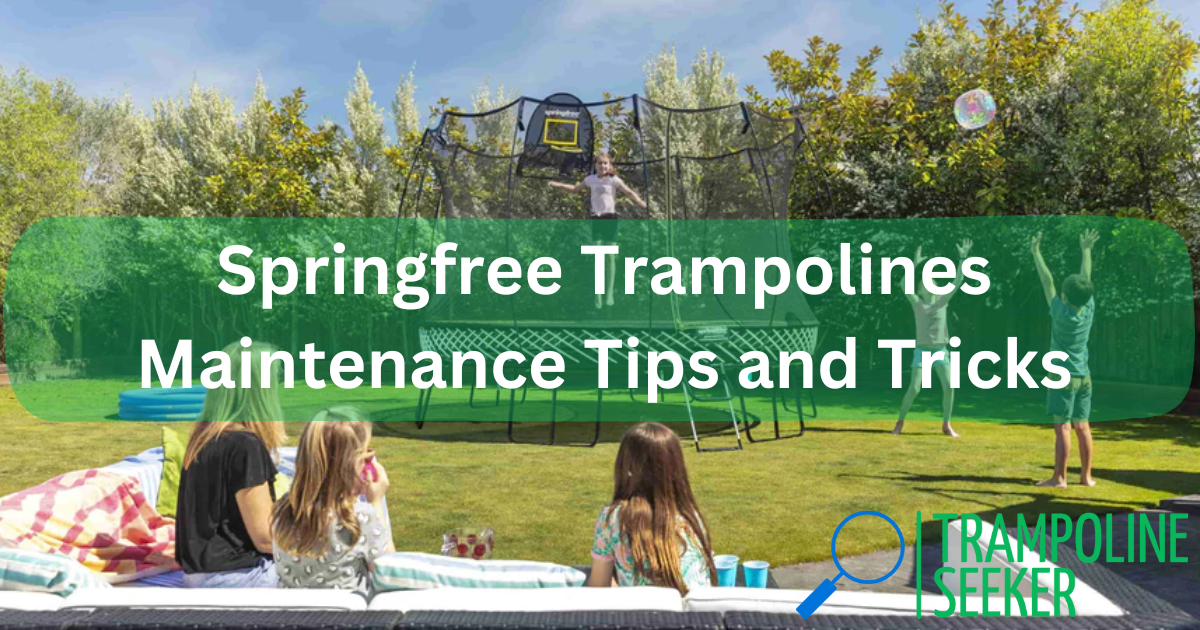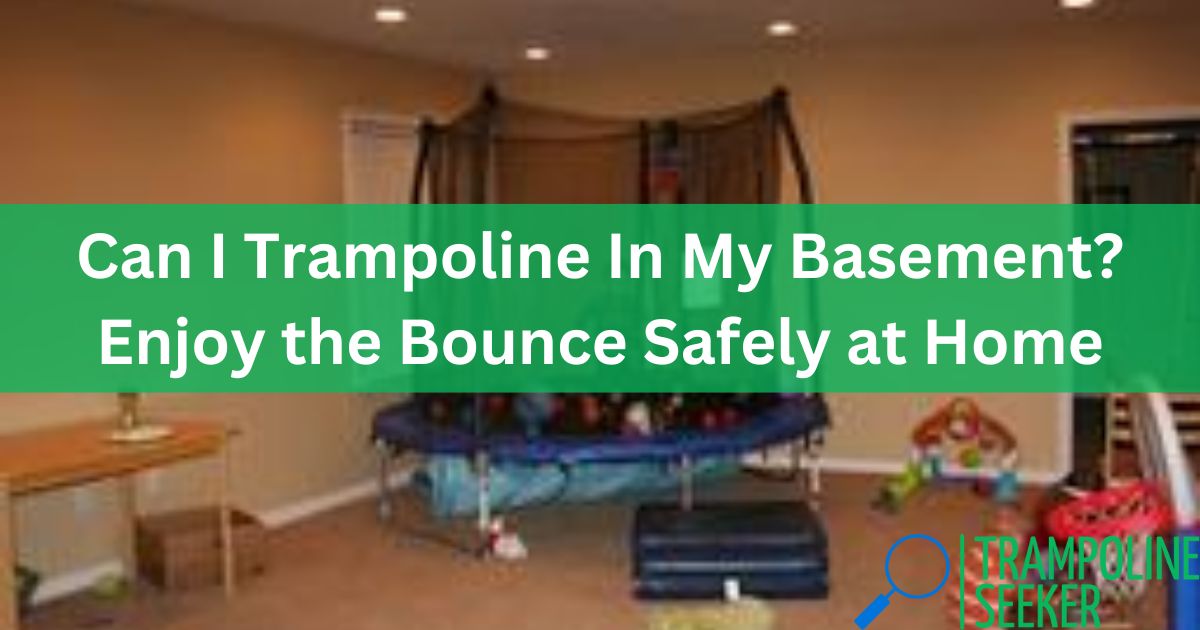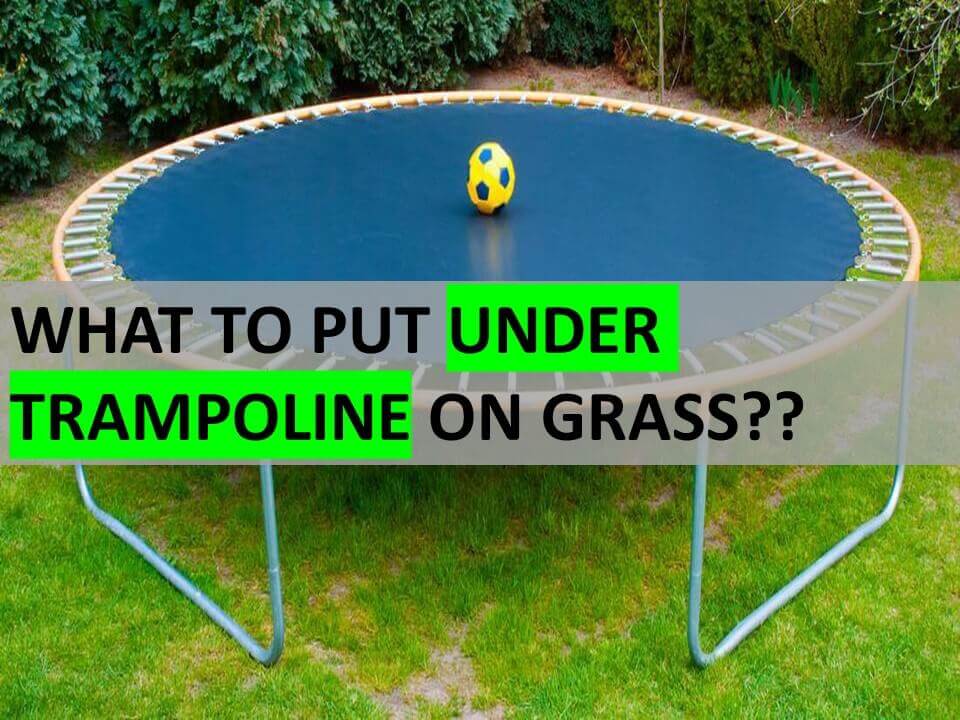People of all ages can have fun jumping on a trampoline, and its great exercise, too. Of course, the structure itself has to be rock-solid, which begs the question: can a trampoline be installed on a slope?
So , How to Level a Trampoline Without Digging? The uneven surface is no problem for trampolines. A trampoline can be installed on a hill or slope, but the installation process will need to be modified. If the slope isn’t too steep, you can secure the trampoline’s upper legs to the ground. Before installation, the ground must be levelled if necessary.
Numerous options exist for achieving a flat surface suitable for a trampoline. This article will encourage you with the knowledge and resources you need to get jumping, whether you need to level major or minor slopes or simply uneven ground.
Related Topics:
| How to Move a Trampoline by Yourself |
| What Size Trampoline for Teenagers |
| How to Play Basketball on Trampoline |
| How to Remove Rust from Trampoline Springs |
| Is Zupapa a Good Trampoline |
How to Level a Trampoline Without Digging?
Benefits of Level Ground
You should think about the condition of the area around your home before installing a trampoline. Is there anything overhead that kids who are bouncing could possibly hit? Are there any obstacles, such as large rocks or other things you wouldn’t want to land on if you bounced out, that you should be aware of? Is there a distinct rise or fall to the ground? This final query is crucial. Bouncers’ security depends on flat ground.
It’s important to note that a level trampoline is more enjoyable before discussing the dangers associated with a slanted one. A trampoline’s bouncing capacity is maximized when it is level. Because of its sturdiness, it can maintain sufficient tension for a high jump and a safe landing.
- If the ground is sloped, the force of the bouncing will gradually push the trampoline’s lower side, possibly resulting in sliding.
- The jumper would be more likely to land on that side, throwing off their equilibrium even further.
This could lead to the springs and mat wearing down more quickly on one side than the other due to the uneven distribution of weight.
Even though an even backyard is ideal for trampolines, there is still hope for those who don’t have one.
Major or Minor Slope?
You need to know the steepness of the slope in your backyard before deciding which option is best for your trampoline and the space available to you there. The simplest way to do this is with a wooden plank that is the same diameter as the trampoline you intend to set up.
- Before putting in the trampoline, you should level the ground there using the plank and the carpenter’s level.
- One person should keep an eye on the level while the other slowly raises the plank’s downward-sloping side.
- A level plank can be identified by the air bubble located precisely in the middle of the instrument used to measure it.
- Determine the height of the plank by measuring its length.
- This is the minimum recommended space between the trampoline and a wall or other obstacle.
Take the resultant number and divide it by the trampoline’s diameter to determine the severity of the slope (make sure they are in the same unit of measurement.) A minor slope is determined if the calculated value is 7 or less.
If the slope is greater than 7, you should either find a gentler area to set up your trampoline or use the techniques outlined here to compensate for the steepness of the slope.
Minor Slope Installation
It’s not a big deal if the slope of the area where you plan to put your trampoline is only a few degrees. On the uphill side of the slope, simply dig holes large enough for the trampoline’s legs.
In order to prevent the rest of the trampoline’s legs from sinking into the ground, you must ensure that the area around the hole you dig is solid. It’s also a good idea to put something in the way of the downhill legs to keep them from moving.
Either set up a small wall next to them or anchor them into the ground (adjusting the higher legs to accommodate the change in the slope). This barrier could take the form of a trench, bricks, or anything else that provides sufficient resistance to prevent the legs from sliding.
There is a special set of guidelines for setting up an in-ground trampoline. However, this type of trampoline’s minor slope issue can be easily fixed.
Since you will already be making a sizable hole in your yard, you need only go a few inches (or centimeters) deeper on the uphill side. Essentially, this is the same as the answer proposed for the other variety of trampoline, only this one is installed below ground!
Leveling Major Slopes
When dealing with a steep slope, it may be best to excavate a terrace and set up the trampoline there. Hiring a professional to do the terracing for you might be the best option if your hill is particularly large. Yet, you can accomplish this task on your own.
To prevent runoff, erosion, and mudslides of any size, you’ll need walls to keep it in place. The spacing between these retaining walls adjusts to accommodate the various sizes and loads they must bear. If the hill you’re using is larger, move the plants closer together.
These walls can be made of wood or rock, but they should be no more than four feet in height. While typical terracing involves multiple levels, only one is required for trampoline setup.
You could also consider lowering the grade of the steeper portion of the hill. In some ways, this is the same as terracing, but it only applies to a single trampoline side. If you want to avoid damaging the trampoline’s perimeter, leave an extra two feet or so of graded space around it.
Uneven Ground
Unlike the issues mentioned previously, uneven ground is simple to rectify. Small-scale instances of uneven ground can usually be handled using the same strategies discussed further on in this article.
You can adjust the height of the trampoline by lowering or raising individual legs, or by using levelling blocks to quickly and easily flatten just the area of land you need. Insignificant adjustments that level the trampoline will solve the issue.













